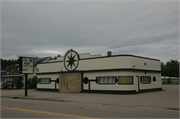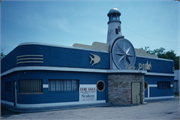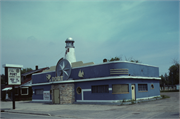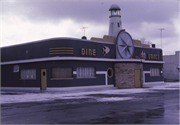| Additional Information: | A 'site file' exists for this property. It contains additional information such as correspondence, newspaper clippings, or historical information. It is a public record and may be viewed in person at the Wisconsin Historical Society, State Historic Preservation Office.
Nightclubs and restaurants prospered during the 1930s and 1940s, despite economic depression and war-time rationing. The repeal of Prohibition in 1933 opened the door for new nightclubs and fancy dining establishments. California set the tone for the restaurant revolution, with supper clubs like Lawry’s in Beverly Hills (1938), which served prime rib from silver serving carts and pioneered the now-familiar salad-course before dinner and baked potato with bacon or chive garnish. Many of these new restaurants attracted customers by taking on an exotic theme. Again, California led the way, with the Polynesian-styled Trader Vic’s (1937) in San Francisco. By the early 1940s, every major city had at least one posh supper club of its own.
Even in Pembine, Wisconsin, the Port Supper Club displayed the glamour that typified many restaurants of that era. On New Year’s Eve of 1941, less than a month after the bombing of Pearl Harbor, the Port Supper Club opened and quickly became popular with servicemen, who stopped on their way to and from military stations in northern Wisconsin, and later with tourists vacationing in the Northwoods.
The Port Supper Club adopted a nautical theme. The inside décor features glass etched with fish motifs. On the exterior, the building's Streamline Moderne design, with its porthole windows and sleek curved-corner walls, suggests the form of a passenger ship. A parapet steps up above the center bay to evoke a steamer's superstructure. The parapet is punctuated by a metal arc resembling a davit, or small crane from which a lifeboat might hang, partially curving around an eight-point compass rose, such as might be found on a navigational chart. At one time, a miniature lighthouse soared above the one-story structure; the bowed entry vestibule, still extant, formed the lighthouse base. Trios of speed lines run around the corners. A dark coping wraps around the building, and graphic bands form right angles, connecting the base of the building visually to ribbons of windows and to banks of glass blocks at each corner. |
|---|





